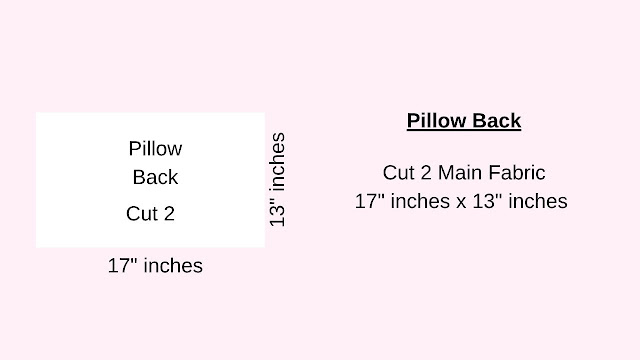How to Make an Oversized XL Scrunchie
Looking for a fun and easy sewing project? In this tutorial, I’ll show you how to make an oversized or XL scrunchie—perfect for adding a touch of style to your hair! I copied the pattern of my favorite scrunchie and used some leftover silky fabric scraps, but you can use almost any light to medium-weight fabric for this project. This tutorial is beginner-friendly and packed with tips to get your scrunchie looking professional and voluminous.
🎥 Watch the full YouTube tutorial here: https://youtu.be/5Fiq0WCEXaY
Supplies You’ll Need
Here’s everything you’ll need to get started:
-
Fabric shears or a rotary cutter
-
Acrylic ruler and self-healing cutting mat
-
Standard thread (match it to your fabric for a clean finish)
-
Hem guide
-
Sewing clips or pins
-
Sewing machine
-
8–8.5 inches of 1/4-inch wide elastic (adjust based on hair thickness or measure your favorite scrunchie and add an inch)
-
Fabric strip 7 inches wide by 22 inches long (or longer for extra volume)
-
Bodkin or safety pin to insert the elastic
Optional: tube turner (or your preferred method for turning the scrunchie right-side out).
Pro tip: For a super fluffy scrunchie, cut the fabric strip along the width of your fabric instead of a fixed 22 inches. The longer the strip, the puffier your scrunchie will be!
🛍 Shop My Favorite Supplies: Amazon Shop https://www.amazon.com/shop/diywithashley
🛑 Disclaimer: As an Amazon Associate, I earn from qualifying purchases
Step-by-Step Instructions
1. Prepare Your Fabric
Cut your fabric strip 7 inches wide by 22 inches long (or longer for extra volume), making sure the edges are straight.
2. Fold and Pin
Fold the fabric strip lengthwise, right sides together, so the short ends match. Pin or clip along the long edge, leaving 1–1.5 inches unpinned at each short end for finishing later.
3. Sew the Long Edge
Sew along the pinned long edge using a 1/4-inch seam allowance. This will create a fabric tube while leaving the short ends open.
4. Turn the Tube Right-Side Out
Use a tube turner, safety pin, or your preferred method to turn the fabric right-side out.
5. Optional: Press the Fabric
If you’re using a fabric like cotton that wrinkles easily, press the tube with an iron for crisp edges (after you've turned it right side out). For silky fabrics, this step isn’t necessary.
6. Sew the Short Ends
Line up the unsewn short ends, right sides together. Using your sewing pins or clips, pin everything into place. Sew the ends together using a 1/4-inch seam allowance. This part can be a little tricky so guide the fabric as you sew slowly.
7. Insert the Elastic
After the ends are sewn, you'll have your scrunchie tube with an opening left to insert your elastic. Attach a safety pin or bodkin to one end of the elastic and thread it through the fabric tube. Ensure the elastic is not twisted inside. Adjust the length to suit your hair—anywhere from 8 to 8.5 inches works well for average thickness. (You can also determine the length of your elastic by measuring your favorite scrunchie and adding an inch.)
8. Sew the Elastic Ends Together
Overlap the ends of your elastic by about 1/2 inch and sew them securely with a few back-and-forth stitches. You can use a zig-zag stitch or a straight stitch.
9. Close the Fabric Tube
After the elastic is sewn, you can close up the opening. Fold the raw edges of the short ends in by 1/4 inch and topstitch the seam closed about 1/8 inch from the edge (or as close as possible for a neat finish). Always use matching thread so the stitches blend seamlessly.
10. Final Touches
Even out the gathers and your XL scrunchie is ready to wear!
💡 See this step in action in my YouTube video: https://youtu.be/5Fiq0WCEXaY
Tips for Customizing Your Scrunchie
-
Fabric Choice: Light to medium-weight fabrics work best. Silky, satin, or cotton fabrics each give a different look and feel.
-
Elastic Length: Adjust the elastic to your preference. Measure your favorite scrunchie and add an inch for a similar fit.
-
Volume: The longer the fabric strip, the puffier the scrunchie. Experiment with different lengths for a dramatic look.
Share Your Scrunchie Creation
I’d love to see what you make! If you post your scrunchie on social media, tag me @diywithashley.
If you enjoyed this tutorial, you can support my work by checking out my Ko-fi store for extra goodies or browsing my Amazon storefront, where I’ve listed my favorite sewing products, including some of the ones used in this tutorial. As an Amazon Associate, I earn from qualifying purchases.
For more fun sewing and craft ideas, check out my other tutorials and playlists on DIY with Ashley. From scrunchies to reversible placemats, there are plenty of beginner-friendly projects to try.
📺 Watch more scrap busting tutorials: Fabric Scrap Buster Playlist
oversized scrunchie, XL scrunchie tutorial, DIY scrunchie, beginner sewing project, how to make a scrunchie, sewing tutorial for scrunchies, fluffy scrunchie





























%20(1).jpg)














